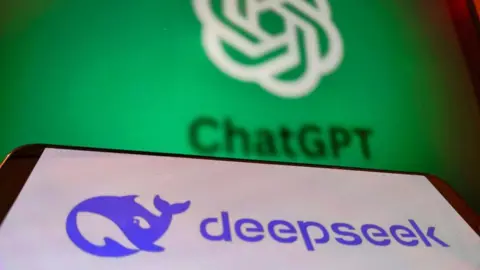The recent entry of the Chinese AI application DeepSeek into the technology realm has created substantial ripples in financial markets, prompting reactions from significant political figures, including former US President Donald Trump, who referred to it as a “wake-up call” for the American tech industry. This assertion is primarily rooted in DeepSeek’s claims regarding its R1 artificial intelligence (AI) model, which reportedly was developed at a remarkably lower price compared to existing competitors in the market. Notably, the app rapidly captivated users, becoming the most downloaded free app in the United States within just one week of its launch. As the AI landscape grows ever more competitive, stakeholders are intrigued by how DeepSeek stacks up against its more established American counterparts, particularly OpenAI’s ChatGPT and Google’s Gemini.
Among the various capabilities offered by these AI applications, writing assistance stands out. ChatGPT, for instance, has successfully positioned itself as an AI companion across numerous workplaces by aiding users in collating information, summarizing content, and even creating blog posts. During a test involving requests to generate written summaries of notable Scottish football players, DeepSeek delivered rapid responses, creating a top-ten list led by the legendary Kenny Dalglish, while also including positions, clubs, and achievements. In comparison, ChatGPT produced a list with similar names alongside a detailed blog post, recognizing the timeless impact of these football greats.
In the domain of programming and coding, the emergence of deep learning models has significantly transformed workflows for developers. The recent outage of ChatGPT highlighted its vital role in coding, eliciting humorous reactions from developers attempting to navigate their tasks without support. This situation prompted an inquiry into DeepSeek’s effectiveness in coding assistance. AI researcher Javier Aguirre from Samsung Medical Center shared that DeepSeek outperformed ChatGPT in solving a particularly complex problem, mentioning its ability to offer immediate and relevant solutions. Furthermore, prominent figures in tech, like Addy Osmani from Google, maintained that the combination of DeepSeek with other AI tools could yield superior coding outcomes.
Another area where both AI platforms were scrutinized is brainstorming and creative idea generation. In one challenge, the chatbots were tasked with producing story ideas for children centered around a boy living on the moon. While ChatGPT presented six distinct ideas swiftly, DeepSeek took a different approach by formulating a complete narrative titled “Luna and the Boy Who Chased the Stars.” Despite its basic storyline, the ability of DeepSeek to deliver a fully fleshed-out concept was noteworthy, showcasing the versatility of AI in creative writing.
When it comes to learning and research, the two AI tools were tested on their ability to explain complex historical events, such as the lead-up to World War I. While ChatGPT provided a comprehensive breakdown of key events and figures, DeepSeek offered a more concise overview with the essential components. Google’s Gemini displayed similar strengths, additionally providing links to reputable historical resources. This demonstrated that DeepSeek, despite being a newcomer, could hold its own against established US competitors in elucidating nuanced subjects.
Ultimately, the evaluations indicated that while each AI model has its strengths and weaknesses, the competition remains very much alive within the AI sphere. As significant advancements continue to emerge from various quarters globally, the question of which entity will lead the AI race remains unresolved. Experts believe that DeepSeek’s emergence signifies just the beginning of a broader landscape of innovation driven by various players—suggesting a distinct shift in the landscape of AI development where established companies may face stiffer competition from unexpected challengers. To emphasize this, Professor Neil Lawrence from the University of Cambridge pointed out that the potential for impactful innovation is ripe, drawing historical parallels to figures like James Watt, who, by enhancing existing technologies, paved the way for future advancements.



